2500+
Successful Projects
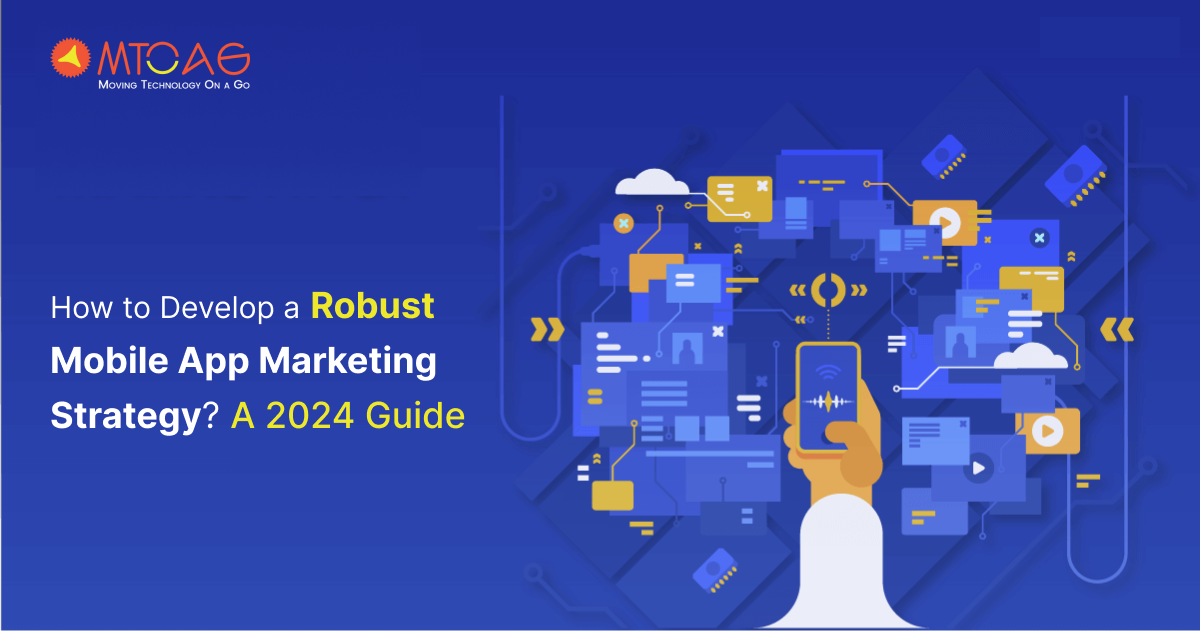
With countless number of mobile apps being added to the Google Play Store and Apple App Store, it is crucial to know that robust mobile app marketing is the only way to stand out in this jungle of the global app market. You will be surprised to know that there are nearly 9 million apps and what’s more interesting to know is that 95% of them are free. So, if you’re planning to offer a paid app, the chances of its adoption are relatively low, and if you’re going for free apps, then you should be ready to face stiff competition. Whatever the case, having a working app marketing strategy by your side will increase the chances of app discoverability, ultimately leading to user acquisition.
Table of Contents
What’s the point of investing thousands of dollars in mobile app development when your users still don’t know your app exists? All your hard work will go in vain. In such a situation, marketing your mobile app seems the only viable option. However, mobile app marketing isn’t all about prompting your app but tracking down the user response from the moment they know about the app to when they become loyal users and continuously making efforts for retention.
Creating a mobile app marketing strategy involves going through a number of crucial considerations, including defining a target audience, learning the ways to reach them, communicating with them, and analyzing their in-app behavior to make continuous improvements for a more personalized experience. Ultimately, the goal behind creating a mobile app strategy should not only be to acquire new users but also to make efforts to keep them engaged and turn them into loyal users.
So, if you have already started mobile app development but are worried about how to make it a success, you need nothing but this guide to developing a robust mobile app marketing strategy. We have also discussed some of the best user retention strategies to keep you going!
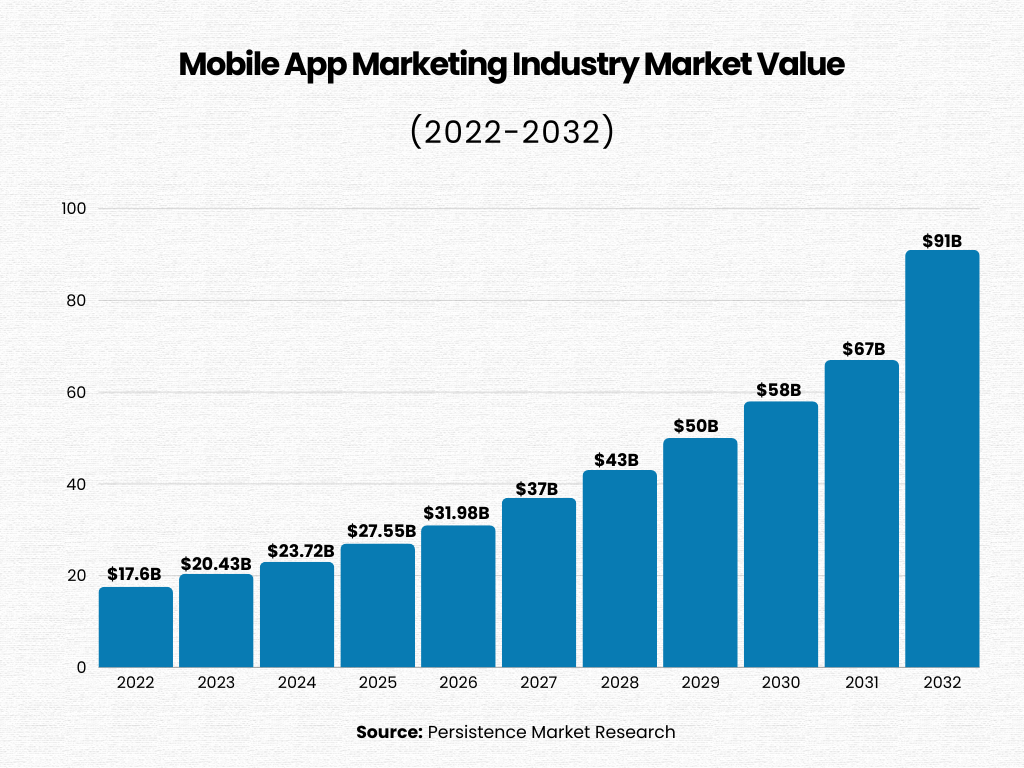
As in our previous blogs on app marketing, we briefly discussed the concept of mobile app marketing, how it works, and how to do it the better way. But remember, creating a mobile app marketing strategy involves a lot of steps to be followed, which we will discuss in this section. So, let’s start!
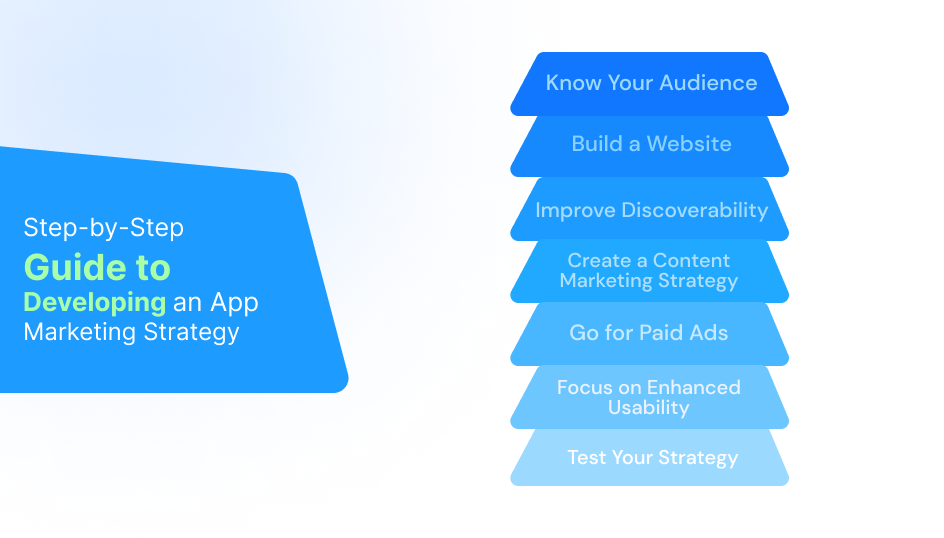
The first step in creating a working mobile app marketing strategy is knowing your app's targeted audience. You need to brainstorm ways to find your targeted audience and write down possible ways to appeal to them. While research requires a lot of resources, effort, and even money, there are many other ways you can do it all yourself. In fact, it doesn’t take hiring a professional to save you both money and time.
Here’s how you can get to know about your targeted audience:
Research your niche: You are definitely building an app for a specific niche market, so instead of researching the global market, start within your niche. For instance, if you’re developing a social media app, you should base your research on other social networking sites, users, and their behavior.
Read reviews: Read what users are saying about the apps similar to yours. Figure out the improvements they want and the features they appreciate. You can even subscribe to industry-related blogs and check out the relevant case studies.
Build personas: One of the best strategies to figure out your targeted audience is creating typical profiles of them. You will need to understand the demographics and details of your potential app users, which include
Answering these questions will help you a lot in understanding the preferences of your targeted audience. You might end up with different personas, which will help you with your user acquisition efforts.
Define message: Once you know about your niche market and targeted audience, the next step is to establish communication with them. Understand how they like to interact with apps. Your message should be clear and targeted toward your audience.
As said, there are nearly 9 million mobile apps and almost 2 million websites worldwide. Regardless of this staggering figure, a website is a must-have if you're promoting a mobile app.
However, you don't want just any website. The internet is flooded with millions of static, inactive websites. To differentiate yourself, you need a vibrant, captivating website that effectively directs visitors to your app store page.
In addition to an eye-catching design and compelling CTAs, consider adding a blog, offering exclusive deals, or setting up a newsletter subscription. These strategies can help you compile an email list, which you can then use to market your app's features to interested customers directly.
And remember, since most web browsing is done on mobile devices, it's crucial to have an impressive mobile version of your site to advertise your app.
User acquisition is the second step of app marketing, and the first one remains to attract new potential users. To encourage initial downloads, it's important to invest time and effort into your mobile app discoverability strategy. This can be achieved through various methods, such as enhancing your app store listing, boosting your SEO, initiating ad campaigns, and more.
Before users download your app, they first need to discover it. That's why mobile app companies are focusing on App Store Optimization to boost downloads, which in turn helps expand your user base. Current data indicates that 65% of app downloads are driven by app store searches.

ASO is a strategy you'll implement for both iOS and Android App stores to rank your app listing higher in search results.
This can also aid in reducing acquisition costs by improving organic discoverability instead of relying on paid methods. ASO can be tailored for local audiences and varies between operating systems.
So, you have an app, a website, and a well-optimized listing in the app store. However, your app won't download itself. You now need to craft a robust content strategy to raise awareness and engagement for your app. This online buzz is what will motivate people to press the download button.
For your content marketing to yield results, there are two crucial points to bear in mind:
Firstly, effective content marketing is a continuous process. You need to consistently create and share content. A single blog post a month won't work wonders. If you want to make your presence felt, consistency is key.
Secondly, your content must be of superior quality and provide value to your audience. It should be informative, entertaining, educational, and more. Generic or dull content won't attract traffic.
Running out of content ideas?
Remember, it's not all about writing long-form articles and publishing them on your site. In fact, there's a plethora of content types you can leverage to diversify your activity:
Remember, a mobile app marketing strategy is incomplete without advertising. The good news is that numerous cost-effective and efficient online advertising methods are available. Many platforms offer sophisticated targeting tools, allowing you to allocate your budget to the most relevant audience.
A combination of various ad types and platforms often yields the best outcomes:
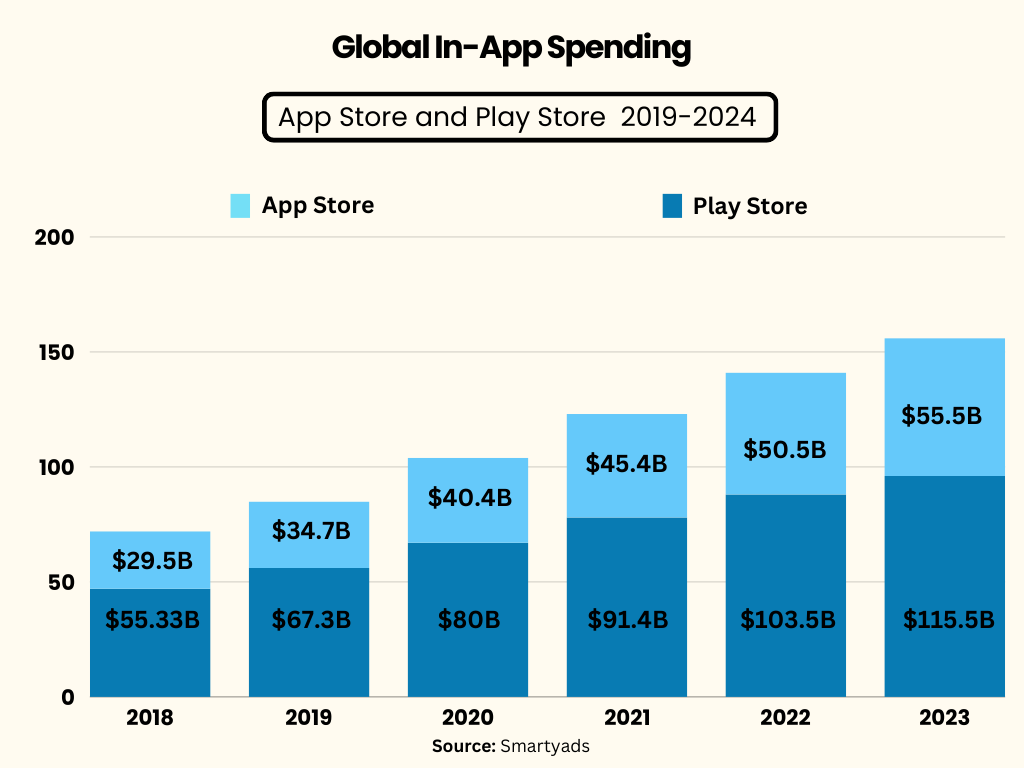
While mobile app marketing strategies can get users to your app, user experience (UX) is what keeps them engaged. Therefore, it's crucial to think outside the box and find innovative ways to improve your app's usability as part of your mobile app marketing strategy. This could involve designing creative messages to address user pain points at the right time or strategically placing important call-to-action (CTA) buttons to drive conversions within the app experience, all as part of your comprehensive mobile app marketing strategy.
To underscore the importance of mobile app marketing, consider these industry-standard statistics:
These figures highlight that for companies with a mobile-first approach, UX is an integral part of your app's experience. Sending transactional and marketing messages to enhance your app's usability at crucial moments of user churn can strengthen your overall marketing strategy and lead to long-term user retention for your platform.
When you chart your user journey during the initial research phase, you may notice instances when users disengage or abandon your app experience.
For instance, you might observe that users tend to churn your retail app after they've placed and received their first order. This could be a crucial moment to send a marketing message via SMS that promotes a product similar to the one they previously purchased.
This scenario also underscores the importance of monitoring your users' behavioral and purchase data throughout their lifecycle to boost your marketing efforts.
The journey doesn't end there once your marketing strategy is in place and operational. The next phase is optimization, which is not just a phase but a continuous process of fine-tuning your marketing efforts to achieve optimal outcomes consistently.
This process involves implementing tracking mechanisms on all your digital assets to monitor the performance of your campaigns or web pages. Based on these insights, you can adjust your assets to enhance the elements that have the most significant impact and discard strategies that are not yielding results.
Tools like Google Analytics, HotJar, or Kissmetrics can assist you in this process. If you're a tech-savvy marketer, you can also delve into various tips and tricks to manually adjust your campaigns.
Another effective strategy is A/B testing of your digital assets. You can simultaneously determine which version yields better results by running identical ads or content with minor changes to CTAs, headlines, images, etc.
The information obtained from A/B tests provides valuable insights for designing your future campaigns and understanding which content appeals to which audience. Here's an excellent beginner's guide to A/B testing.
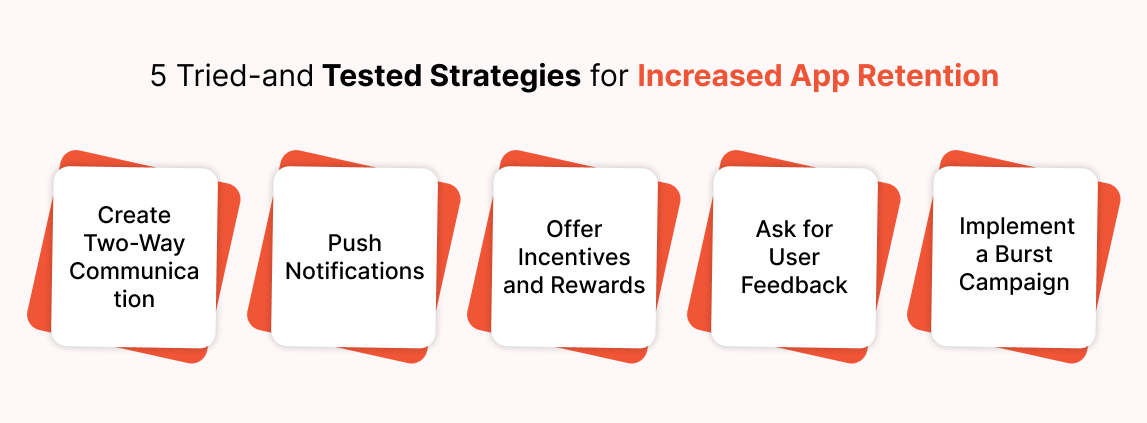
Now that you have learned how to market an app and attract users, let’s move on to the crucial stage - retention. It is actually the real challenge for businesses, as 90% of users delete an app within the first 90 days of its installation. The statistics underscore the importance of having a robust retention strategy. So, here are some strategies to look at:
As said earlier, user experience is everything when it comes to retaining users. The more aligned your app is with user’s diverse needs and preferences, the more they will use it. According to the latest stats, businesses using in-app messaging have seen a 61% to 74% increase in retention rates.
In-app messaging is unlike push notification, which requires immediate action. Instead, they are more important than those. These in-app messages include payment failures, warnings about app issues, or version updates. However, not every message you send to users will be relevant to every individual user.
Push notifications have proven to significantly boost user retention, with data indicating an increase ranging from 56% to a whopping 180%.
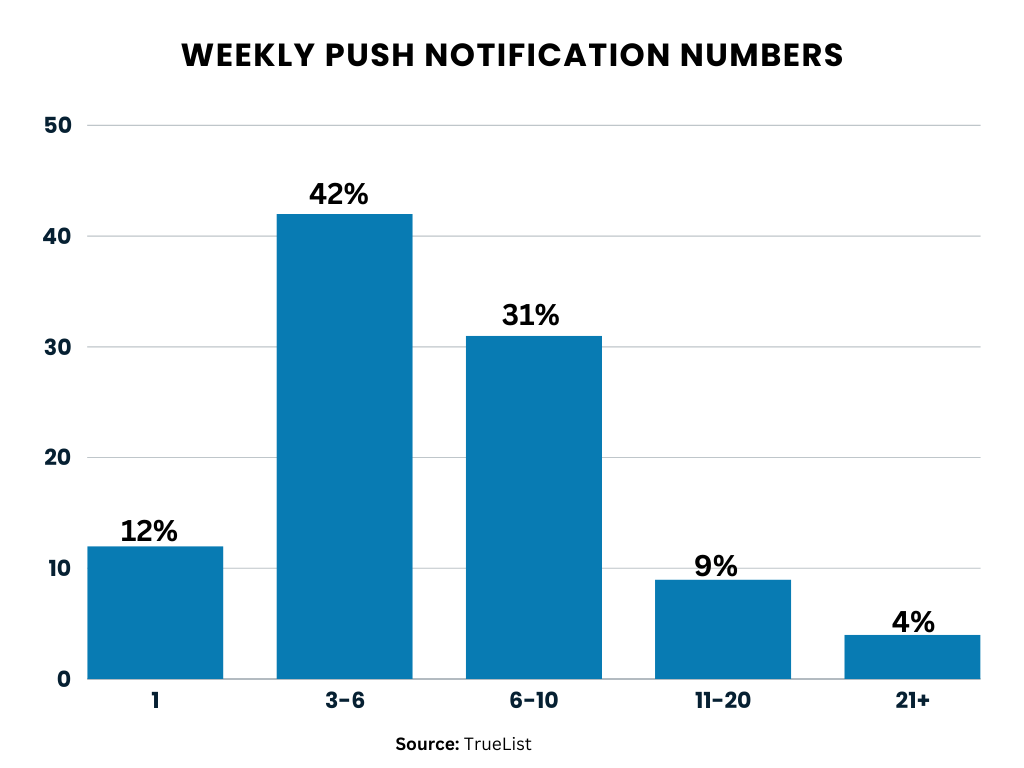
Users who choose to receive push notifications are found to engage with the app 88% more than those who don't. A higher retention rate translates into a better ranking on the app store.
Encouraging users to use your app can be highly effective. Offering mobile-specific rewards, exclusive content, coupons, special promotions, and other incentives can drive conversions and foster user engagement.
Offering your users a bonus or benefit for promoting your app online is an effective way to encourage word-of-mouth marketing. Dropbox's staggering growth rate of 3900% serves as a fine example of the power of referrals. Thanks to its referral program, the company saw its registered users surge from 100,000 in 2008 to an impressive 4,000,000 within just 15 months.
Regular usage of your app indicates that users have formed a connection with your product. Provide them with an opportunity to voice their opinions via a pop-up invitation for a review.
However, ensure that this strategy doesn't compromise the user experience. Plan the timing and method of your review request to seamlessly integrate with the user journey and avoid user frustration. A well-placed pop-up increases the likelihood of a positive review.
A "burst campaign" is a widely used strategy among mobile app marketers aiming to increase the app store ranks. This approach involves an aggressive push for paid media exposure over a brief period, typically between 24 and 72 hours, depending on the budget.
The objective is to maximize paid installs, thereby boosting your ranking. This strategy aims to increase the number of high-quality organic installs that should follow once the app achieves a high enough rank to be discovered.
While a successful burst campaign should attract more organic downloads, continued paid advertising is necessary to maintain steady downloads and keep the momentum going.
Even if you have the world’s best app launch plan, it may still fall flat without the right mobile app marketing strategy to get the word out. Without it, your app might never reach its intended audience. It's important to note that not every tactic we've mentioned will be suitable for your specific app.
However, a carefully devised strategy that includes a few of these tactics could be highly successful in motivating users to download and begin using your app. Once users have your app, it's crucial to ensure that they remain engaged and continue to use it regularly.
Remember, while developing a mobile app marketing strategy seems super-easy, it involves a lot of considerations and a set of steps to be followed. To get help with your mobile app marketing needs, you can contact us at Mtoag Technologies and put your app’s success on autopilot mode.
The four P’s of app marketing are four of the crucial factors in marketing an app for the public. These 4P’s include Product, Price, Place, and Promotion. The concept was first introduced in 1950 and has been influencing the product marketing industry since then.
Start by understanding your target audience and their needs. Create a unique value proposition for your app. Use app store optimization (ASO) for visibility. Leverage social media, blogs, and influencers for promotion. Consider paid advertisements if the budget allows.
Identify your target audience and their mobile usage habits. Set clear goals and KPIs. Optimize your content for mobile. Use mobile advertising platforms for promotion. Regularly analyze and adjust your strategy based on performance metrics.
Begin with a compelling elevator pitch that briefly explains your app's unique value. Use visual aids like mockups and prototypes. Network with potential users and investors. Leverage social media and blogging platforms to generate buzz. Consider crowdfunding if initial funding is needed.